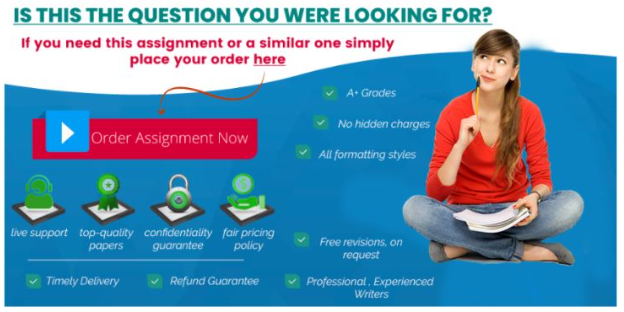Personal Leadership Philosophy
· Identify two to three scholarly resources, in addition to this Module’s readings, that evaluate the impact of leadership behaviors in creating healthy work environments.
· Reflect on the leadership behaviors presented in the three resources that you selected for review.
· Reflect on your results of the CliftonStrengths Assessment*, and consider how the results relate to your leadership traits.
*not required to submit CliftonStrengths Assessment
The Assignment (2-3 pages):

Personal Leadership Philosophies
Develop and submit a personal leadership philosophy that reflects what you think are characteristics of a good leader. Use the scholarly resources on leadership you selected to support your philosophy statement. Your personal leadership philosophy should include the following:
· A description of your core values.
· A personal mission and vision statement.
· An analysis of your CliftonStrengths Assessment summarizing the results of your profile
· A description of two key behaviors that you wish to strengthen.
· A development plan that explains how you plan to improve upon the two key behaviors you selected and an explanation of how you plan to achieve your personal vision. Be specific and provide examples.
· Be sure to incorporate your colleagues’ feedback on your CliftonStrengths Assessment from this Module’s Discussion 2.
Personal Leadership Philosophy
My discussion post
Completing the StrengthsFinder assessment provided valuable insight into my natural talents and leadership traits. My top five signature themes are Achiever, Relator, Learner, Responsibility, and Strategic. These themes highlight a strong internal drive for accomplishment, an emphasis on building meaningful relationships, a dedication to continuous learning, accountability for outcomes, and an ability to think critically about optionsm and pathways forward. Together, they reflect a leadership style that balances productivity with empathy and foresight.
Two core values that align closely with the results are integrity and lifelong learning. Integrity is tied to my Responsibility theme, as I naturally feel accountable to follow through on commitments and uphold trust. Lifelong learning reflects my Learner theme, as I am motivated to expand my knowledge and grow both personally and professionally.
Two strengths I recognize from my results are my work ethic (Achiever) and my ability to build strong connections (Relator). These strengths support my leadership in the ICU setting, where consistent performance and meaningful teamwork are essential for positive patient outcomes. My Achiever theme pushes me to set daily goals and maintain momentum, while my Relator theme helps me foster trust and collaboration among colleagues.
Two characteristics I would like to strengthen are my strategic foresight and balance between achievement and self-care. While my Strategic theme enables me to see multiple pathways, I would like to refine my ability to communicate those strategies more effectively to my team. Additionally, my Achiever theme often drives me to push forward relentlessly, which can risk burnout. Strengthening balance and resilience will ensure I can sustain long-term success as both a nurse and a leader.
Overall, the StrengthsFinder results affirmed many aspects of my leadership style while also pointing out areas for growth that will help me continue to develop as an advanced practice nurse.
References
Gallup. (2024). CliftonStrengths for students: Top 5 report. Gallup Press. https://www.gallup.com/cliftonstrengths/en/home.aspx
Bowers, A., & Bartleet, M. (2022). Strengths-based leadership in nursing: Building resilience and engagement through CliftonStrengths. Journal of Nursing Management, 30(6), 1512–1519. https://doi.org/10.1111/jonm.13593
Sull, D., Sull, C., & Zweig, B. (2022). Toxic culture is driving the great resignation. MIT Sloan Management Review, 63(3), 1–9. https://sloanreview.mit.edu/article/toxic-culture-is-driving-the-great-resignation/
Zanchetta, M. S., Schwind, J. K., & Aksenchuk, K. (2021). Fostering self-leadership and strengths use in nurses through reflective practice. Journal of Clinical Nursing, 30(17–18), 2531–2543. https://doi.org/10.1111/jocn.15783
Response 1
Hello Anthony,
Thank you for laying out how you build connections in the unit. To strengthen that even more, consider formalizing peer coaching for nurses for a brief weekly check-in focused on one skill, one metric, and one follow-up, and close each shift with a minute after-action huddle to ask “what help? What should we change tomorrow?” Those small, repeatable efforts will provide good intentions into reliable habits and keep learning visible. As a strong nurse leader, it is essential to practice initiating, participating in, and advocating for knowledge translation across all settings (Chan et al., 2023).
Applying these efforts to leadership involves utilizing the achiever skill to define daily wins and maintain momentum, and employing responsibility skills to assign accountable owners and timelines, so that people look to you for direction and guidance (Rath, 2007). By utilizing relator skills, you can lead a huddle to address concerns and amplify support, as you are already excellent at developing relationships with those you are already familiar with (Rath, 2007). According to Chan et al. (2023), the authors emphasize that evidence-based practice is the current best practice, and utilizing a complex systems lens and transformational leadership can enhance the connection between research and proactive leadership skills.
Response 2
Thank you, Anthony, for providing your StrengthsFinder results and your insightful reflection. Your themes of Achiever, Relator, Learner, Responsibility, and Strategic exemplify a comprehensive leadership foundation that harmonizes productivity, collaboration, and strategic foresight. I concur with your acknowledgment of the significance of enhancing strategic foresight and sustaining equilibrium for resilience.
A suggestion to enhance your strategic theme is to engage in deliberate communication while outlining options for your team. Research indicates that effective leaders not only formulate strategies but also convert them into actionable and collective visions that motivate team members (Broome & Marshall, 2021). Consider utilizing structured communication tools, such as SBAR (Situation, Background, Assessment, Recommendation), to convey strategies clearly and succinctly in critical clinical environments.
Your Achiever theme signifies a strong drive for accomplishment, which is an invaluable asset; however, as you mentioned, it may also heighten the risk of burnout. A strategy to enhance this domain is the implementation of reflective leadership—intentionally pausing to assess priorities and delegate as necessary. Research indicates that leaders who harmonize self-care with productivity cultivate healthier work environments and enhance overall team performance (Shanafelt & Noseworthy, 2017). Implementing resilience practices, such as mindfulness and regular debriefings with colleagues, can safeguard your energy while maintaining optimal performance levels.
Your Relator and Learner themes present opportunities for transformative impact. Mentoring junior staff enhances relationships while exemplifying lifelong learning. This corresponds with evidence indicating that leaders who mentor and invest in employee development improve team engagement and retention (Boamah et al., 2018).
Your results reflect a leadership style rooted in integrity, development, and foresight. By enhancing the communication of strategic insights and prioritizing equilibrium, you can augment your influence as a nurse leader while preserving personal well-being.
-
Identify two to three scholarly resources that evaluate the impact of leadership behaviors in creating healthy work environments,
-
Reflect on the leadership behaviors presented in the selected resources,
-
Reflect on your CliftonStrengths Assessment results and relate them to leadership traits,
-
Describe your core values personal mission and vision statement,
-
Describe two key behaviors to strengthen and develop a plan to improve them and achieve your personal vision









